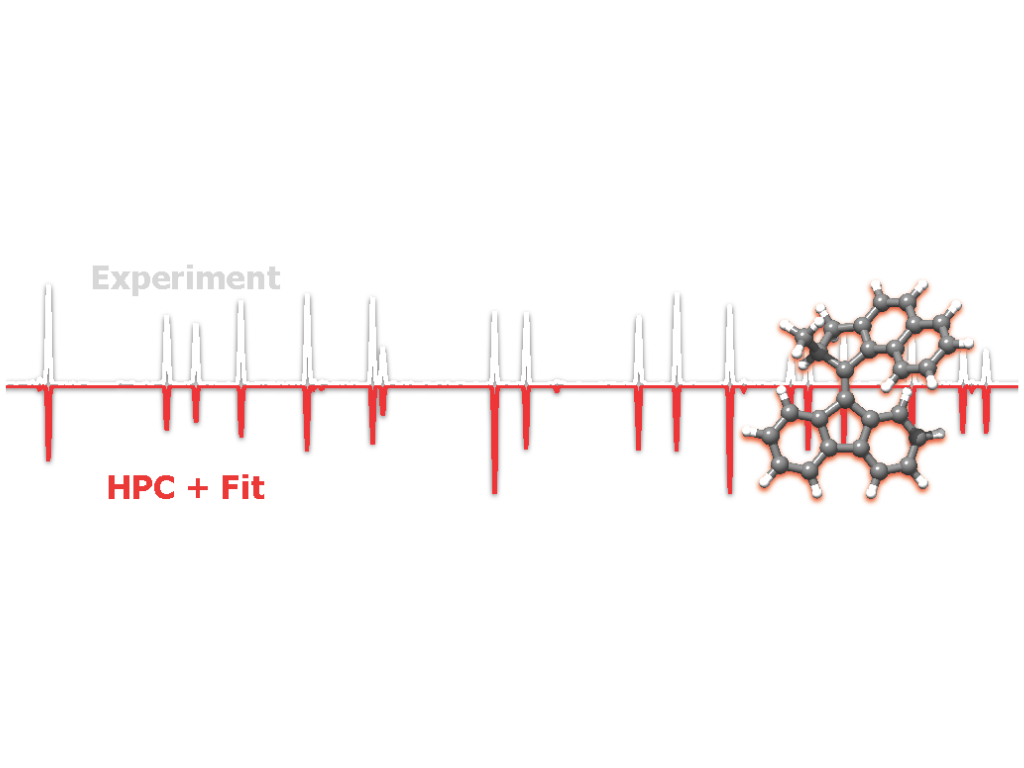
CFisUC – Center for Physics of the University of Coimbra
MiCRoARTiS is the acronym for the project “Microwave Fingerprinting Artificial Molecular Motors in Virtual Isolation”, funded by a Starting Grant (GA 101040850) of the European Research Council (ERC). The principal investigator, Sérgio Domingos is coordinating a team of physicists, chemists, and engineers to develop new instrumentation and methods to map the three-dimensional shapes and mechanical steps of artificial molecular motors in the gas phase. With high resolution gas phase spectroscopy, molecular ensembles can be studied without the interference from external forces present in condensed phase scenarios. High Performance Computing (HPC) is a fundamental tool for the project, and a roadmap that guides the whole scientific process.
Artificial Molecular Motors (AMMs) convert energy into controlled motion to drive a system out of equilibrium. These synthetically-made molecular architectures can alter their structure and functionality when driven by external stimuli, namely light, heat or even electricity. The design of new AMMs with user-defined function is a quest in modern synthetic chemistry. Several classes of synthetic molecular motors have been in the spotlight for several years because of their abilities to perform motion at the molecular scale in a controlled manner using light. Synthetic chemistry groups around the world, some of them lead by chemistry Nobel laureates, are continuously pushing the envelope, by imagining and creating these novel artificial molecular machines in their laboratories. Because of their pioneering work, AMMs have evolved much beyond mere scientific curiosities, and are now at the core of major breakthroughs in molecular nanotechnology.
The goal of project MiCRoARTiS is to develop new tools to observe the unique structural properties and functional performances of these nano-machines, accessing the molecular conformations at each mechanical step and their structural evolution under virtual isolation conditions, i.e., not perturbed by external influences. Microwave rotational spectroscopy on isolated AMMs in the gas phase is especially suited for this purpose. Because of the intrinsically narrow line widths of rotational transitions, high-resolution rotational spectra are molecular fingerprints with extraordinary molecule- and conformer-specificity that allow an unambiguous assignment of exact three-dimensional structures.
With the recent installation of a state-of-the-art chirped-pulse Fourier transform microwave (CP-FTMW) spectrometer at the University of Coimbra, researchers at CFisUC are now equipped to perform these gas phase experiments, in a unique scientific infrastructure in Portugal.
Using such instruments, the rate at which rotational data can be acquired is extraordinary, and the amount of structural information within a broadband microwave spectrum can be overwhelming. HPC is thus fundamental to navigate the rich, complex high-resolution spectra collected with such techniques. Researchers in Coimbra are intensively using the Navigator cluster, running quantum chemistry calculations to map the complex conformational landscapes of these AMMs, and ultimately use this information for predicting molecular properties and simulating rotational patterns required to search and assign new species.

